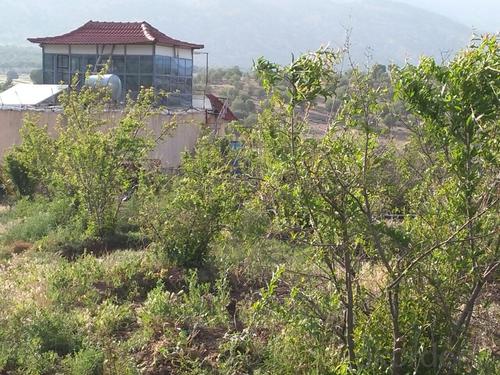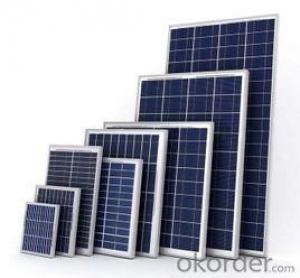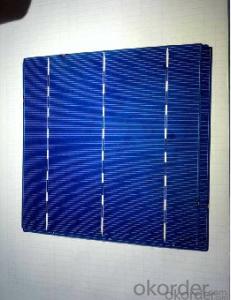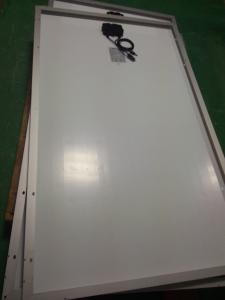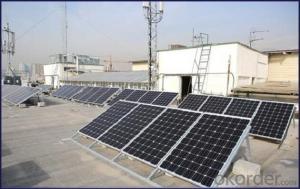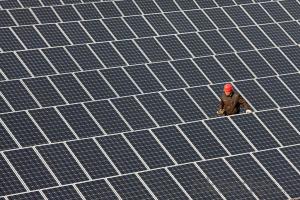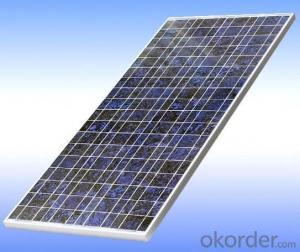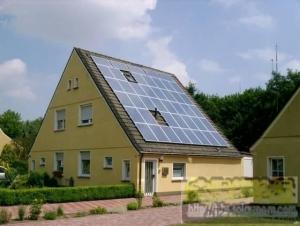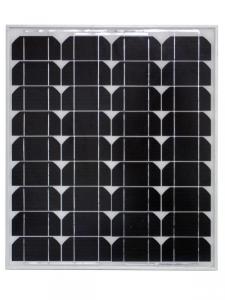UL and TUV Approved High Efficiency 100 Watts Mono Solar Panel
- Loading Port:
- Shanghai
- Payment Terms:
- TT OR LC
- Min Order Qty:
- 10000 watt
- Supply Capability:
- 20000000 watt/month
OKorder Service Pledge
OKorder Financial Service
You Might Also Like
Specification
1.The Description of Product
Nowadays, with the shortage of the energy sources, people start to develop the solar energy, a new long lasting sources of energy which can be used almost anywhere. Why solar energy become so popular, we summarized the below some advantages of solar energy.
Type | CNBM Solar Polycrystalline Series |
Materials | Silicon |
Guarantee | 12 yrs free from defects in materials and workmanship No less than 90% within 10yrs and no less than 80% within 25yrs TUV(IEC61215&IEC61730), CE, UL |
Application | Photovoltaic/ solar/ green energy/ energy saving |
Descriptions | 1.High efficiency crystalline silicon solar cell. Even if under the weak light, the solar module can produce maximum power output. 2.Tempered glass (toughened glass): Anti-reflecting coating and high transmission rate glass increase the power output and mechanical strength of solar module. 3. EVA and TPT: Using high quality EVA and TPT to prevent destroying and water. 4. AI frame: Without screw, rner connection. 6 holes on the frame can be installed easily. 5. Junction box: Multi function junction box with water proof. 6. Long lifetime: ≥25 years; Less power decrease. 7. Good performance of preventing from atrocious weather such as wind and hails. 8. Resisting moisture and etching effectively, not effected by geology. 9. The certificate issued by international authority: UL, TUV, IEC, CE.
|
2.Production Line
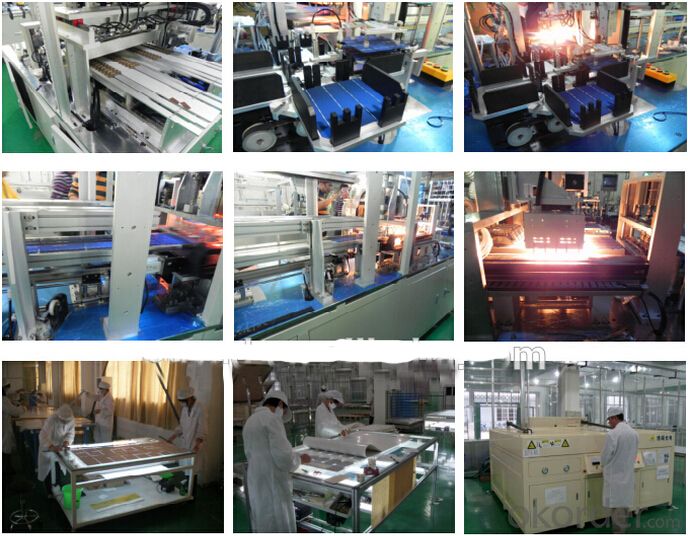
3.The Pictures of Solar Panels
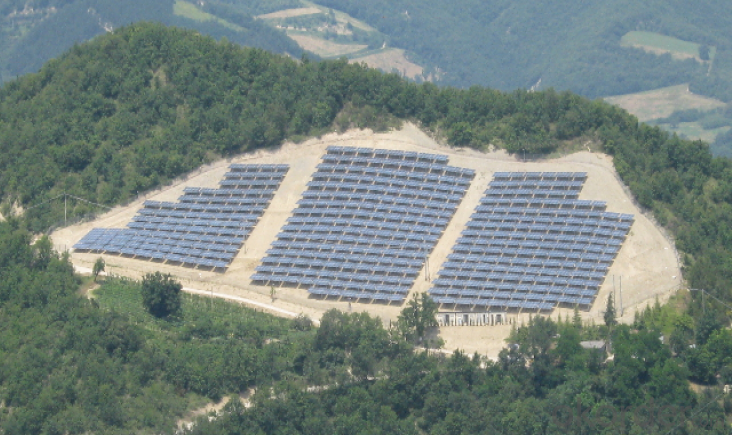
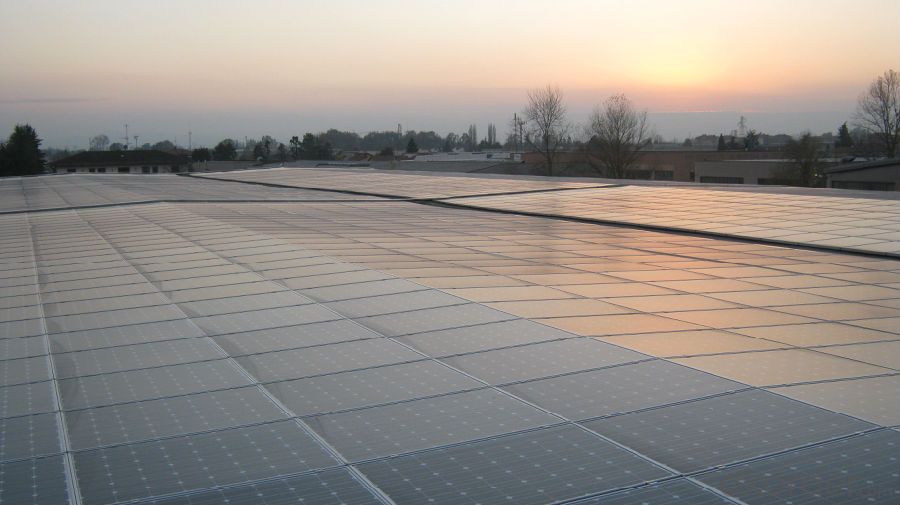
4.Packing
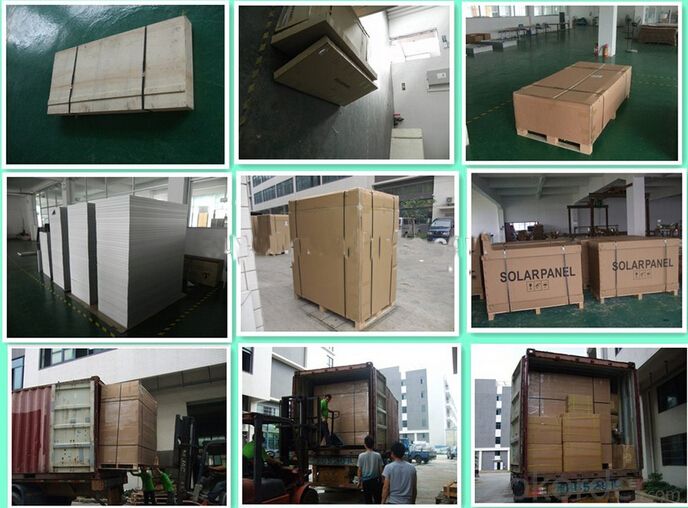
5.FAQ
1). How to buy?
Contact with the talking button.
2).Can you do OEM for us?
Yes, we can.
3). How long can we receive the product after purchase?
In the purchase of product within three working days, We will arrange the factory delivery as soon as possible. The perfect time of receiving is related to the state and position of customers. Commonly 7 to 10 working days can be served.
4). Can we visit your factory?
Sure, welcome at any time is believing.
- Q: My hubby and I are waiting to move in to our camper but have to figure out how many solar panels, batteries, etc. to get. I can't find the info per appliance for Watts and amps, but does anyone have a good, general idea of how many Watts it'd take to run the whole shabang? It's a 999, 25-foot Sportsmen tag-a-long, if that helps..It's got the following, and we'd like to run the propane things off of electric:*Refrigerator/freezer*Microwave*Oven/stove*AC/Heat*Will have a tv, phone chargers, laptop charger, but those will be unplugged when not in useThanks so much! It's such a headache.. You get SO MUCH different info from different places.. OI..
- With an RV, you can find lithium bromide water chiller based refrigerators and air conditioner that run mostly on propane with just a little bit of electricity for a pump and fans. The oven, stove and heat, you can also run off propane. A Microwave is probably 750 watts but only operates for a few minutes at a time. You'll just have to go through everything item by item and figure out how many watts each one will draw and how long each will run per day to size your solar panel. Don't forget that the sun will only shine for a few hours each day. In general, for a camper, the target isn't to produce all the power you need but to slow down the drain on the battery bank to last till you get back onto the road where the engine can recharge the batteries. Keep in mind that the lithium bromide chiller systems only operate when stationary and level so some people opt for conventional electric systems just for convenience which sounds like what you're trying to do. Best way to figure out how much power each is drawing is by measuring it while in use. It may be worth it to put a meter on the battery bank and go camping one weekend with a generator or put a meter on the main circuit breaker panel and camp where power is provided, just to see what your typical use is. You're far better off running as much as possible from propane.
- Q: a) i'd like to get a solar panel to make this thing i saw in popular science, it was a bag that had a solar panel in the side (you just attach it with grommets into a clear vinyl pocket you make. its for charging elecronics and stuff) and i was wondering what kind i should look at, do they come flexible? can i get them on OKorder? what kind of wattage should i look for (btw it also had a little voltage regulator and stuff to make a little usb in your bag) so any info on that!b) i was thinking about like putting solar panels on my roof, where can i look into that, is that a good choice, has anyone done it, how did it work out? thank you, just curious
- answering b) your home circutry won't be able to handle solar power energy (or your circut breaker,it will start cuttin out every 5 min)you would have to replace your home circutry(that costs a LOT of money, over $8500)
- Q: I want to build solar panels for my house.Dose anyone try okorder is this really work?
- you okorder they have solar panels
- Q: i already have solar/gas water heating, but was wondering if getting solar panels for electricity installed was a good idea.
- Create okorder
- Q: If my school uses 88240kWh of electricity per month and I have 000 50W solar panels running for 6 hours a day, does it mean it will take 88240kWh / {{[(50W x 3600s)*000]/000}kWh x 6} number of hours to generate that much electricity (88240kWh)?
- running six hours a day doesn't mean much. You need to look at the solar insulation charts for your school's geographical location to come up with a better factor. The easiest number for you to use is sun hours. For example, Washington DC averages 4.23 hours. Do a Yahoo search for sun hours and you should find lots of charts. Solar panels rated at 50W give this output at full sun near noon at full brightness (no clouds). The sun hour factor makes it easy to find the equivalent number of full brightness hours. So, using Washington DC as an example you have: 000 panels * 50W * 4.23 sunhours/day = 634kWh a day on average. You state your school uses 88240kWh/month which is 6274kWh a day. This would mean you need ten times more solar panels since there is no way to get more daylight. Be careful to put in all the units in your formula and cancel them out to make sure you don't end up with a nonsense result. The title of the question would be answered as followed: 50W/000 * 4.23 sunhours/day = 0.63kWh/day or 9kWh per month or 228kWh a year. These are annual averages. If you wanted a specific month, you would need the sun hours for that month. Hope this helps.
- Q: Hi I need to replace the solar panel on my calculator and was wondering where I could buy one. Thanks in advance for your answers.
- My suggestion is to first make sure that your calculator does not also use a tiny button cell. It could just be that the battery went dead. Also know that it's probably less trouble to just get a whole new calculator. If you have the skills to replace the solar cell, I'd suggest first disconnecting it, and wiring a .5 volt battery in its place. If that doesn't work either, maybe the problem is not the solar cell at all, but just its connection, or even a dirty ON button. As for where to get a replacement solar cell, if it were me, I'd go to a dollar store, and see if they have a cheap solar calculator that I could harvest one from.
- Q: Can solar panels be installed on disaster relief shelters?
- Yes, solar panels can be installed on disaster relief shelters. They provide a reliable and sustainable source of energy, allowing these shelters to have electricity for lighting, charging devices, and powering essential equipment, even in remote or disaster-stricken areas. Solar panels can greatly enhance the functionality and efficiency of disaster relief shelters, contributing to the overall effectiveness of relief efforts.
- Q: How much energy can a solar panel generate?
- The amount of energy a solar panel can generate depends on various factors such as its size, efficiency, location, and weather conditions. On average, a standard solar panel can generate between 250 to 400 watts of electricity per hour under ideal conditions. However, it's important to note that energy production may vary throughout the day and across different seasons.
- Q: I was just wondering what the minimum and maximm charging voltage and ampere is for li ion batteries. If i connect a solar panel, which only gets enough sunshine to generate voltage, will that still charge the battery, or would i have to series connect solar panels until they together reach 3,7volt?
- One lithium cell requires 4.2V to obtain its full charge, Never exceed 4.2V ! Output from solar panel if below 3.7V , nothing charge to lithium. Total charging time until the cell is full depending on the AH rate of cell and the charging current that solar panel can be provided. Suppose cell is rate 5AH, and the charging current from solar panel under full sun shine can maintain 0.5A ( use solar panel short circuit current rate from its specification as a reference ) , hence, 0 hours is enough. And be sure the solar panel can maintain 4.2V output at 0.5A . Remember, over charge lithium cell one time might reduce its life into half . Therefore, let the solar panel output passing through a precision regulator to maintain output is 4.2V is the best way, because, as cell reaches 4.2V , no more charging current is forced into cell ( automatic stop charging ). If you do not have the knowledge to make this simple variable voltage regulator with LM37K ( if you choose this way, buy solar panel output has at least 2V) , you may choose to do it manually by install a current meter and a variable resistor in series between the panel output to cell. By adjust the value of resistor, charging current can be controlled ( if you choose this way, buy solar panel output has as less as 6V ). Count the charging time with a clock and adjust the charging current from time to time to maintain 0.5A .
- Q: I'm looking into buying solar panels, there are all kinds of ranges of energy output...but my question is, when ti says...say 50 watts of power...does that mean 50 watts a day, an hour, a minute, what?
- A 50-watt rating means the panel will produce 50 watts as long as the standard conditions are maintained. So if you had this bright sun and cool temperatures for 6 hours, the panel would deliver 50 x 6 = 900 watt hours, or a little shy of kilowatt-hour. Kilowatt-hours (kWh) is the reading on your electric bill. However, like most advertising, the 50-watt number is not realistic. They assume that the air surrounding the panel is very cold. 25 watts is a better number to use for this size of panel for engineering purposes.
Send your message to us
UL and TUV Approved High Efficiency 100 Watts Mono Solar Panel
- Loading Port:
- Shanghai
- Payment Terms:
- TT OR LC
- Min Order Qty:
- 10000 watt
- Supply Capability:
- 20000000 watt/month
OKorder Service Pledge
OKorder Financial Service
Similar products
Hot products
Hot Searches
Related keywords


